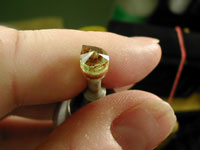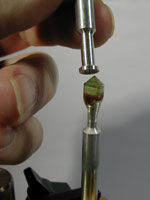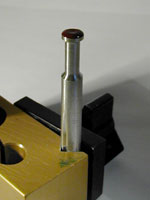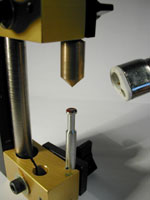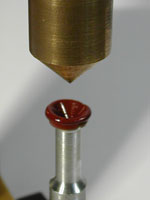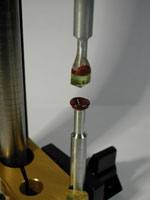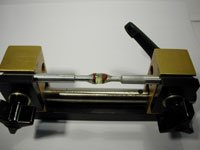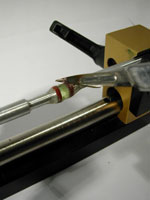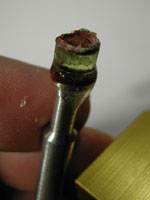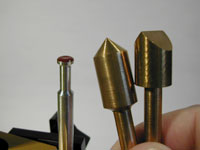 |
As before, we need something to form the melted wax into
the desired shape. I use homemade brass "anti-dops," which are
the mirror image of actual cone and Vee dops.
Such accessories are not necessary. You could use the stone itself to
make an impression, or even manufacture your own anti-dops on your faceting
machine, using inexpensive rough (i.e. glass) permanently attached to
a dop stick (essentially like the brass ones at left, but made of dopped-up
chunks of glass). Attentive readers will note that a flat dop, such as
that used in Step 1, is its own
anti-dop. |
